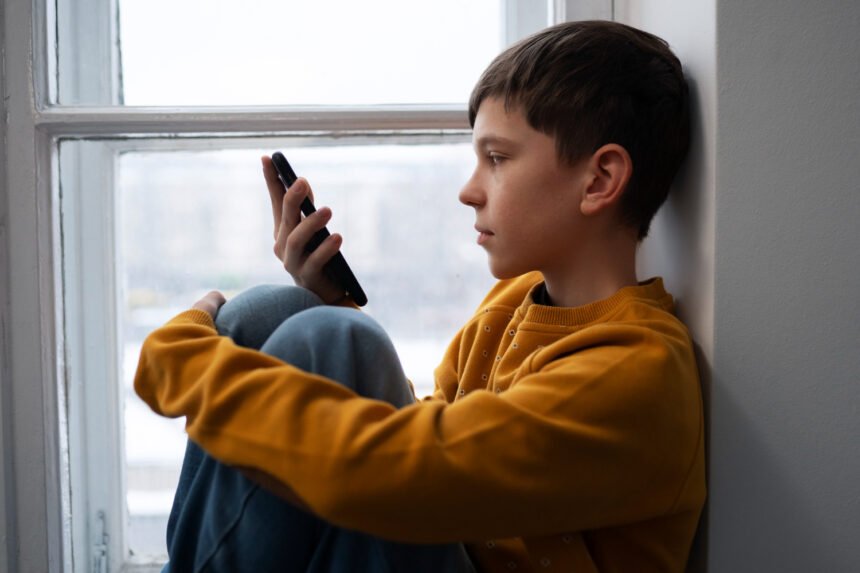By connecting more teenagers through locations such as Pink Video Chat to transmit information to distant friends, social networking comes with specific hazards to mental health. Nearly half of teenagers are Internet users “almost constantly,” and 9 out of 10 youths use social media daily. While these sites do provide connections and support, there is, of course, depression from too much use, coupled with lost sleep and changed brain development in worrying ways.
Then parents, teachers, and teenagers can look for practical solutions to navigate this digital landscape safely. Knowing what the risks are and addressing them can help preserve the mental and social advantages while maintaining bright minds.
The Real Impact of Social Media on Teen Mental Health
Depression and Mood Changes
Studies show a strong link between heavy social media use and teenage depressive symptoms. However, the experts at Johns Hopkins report that the two ends of social media, the very low and the very high, show an increase in depression rates. Hence, there is the “sweet” spot of healthy usage for every given teenager.
The association works in different ways. The young adults spending too much time scrolling and RoI through cyberspace feel, at times, socially isolated. Virtual interactions often do not offer the emotional payoff of face-to-face conversation, leaving teenage souls hollow and empty despite the unceasing digital engagement.
Brain Development Concerns
The teenage brain undergoes critical development, particularly in areas controlling emotions, learning, and impulse control. Heavy social media use during this period can alter these developing neural pathways, affecting:
- Emotional regulation capabilities
- Learning and attention spans
- Impulse control mechanisms
- Social behavior patterns
- Sensitivity to social rewards and punishments
Sleep Disruption Patterns
Teen sleep quality is severely impacted by various means through social media. Blue light-soaked screens disrupt natural circadian rhythms, while engaging content keeps those minds active when they should now be winding down.
Teens often fall into the trap of “just five more minutes,” which can turn into endless scrolling when they intended only to do a quick check-in. All these behaviors, in conjunction with stress responses from comparing oneself to others and negativity found on social media, have it all set for a sleep-deprived situation.
Mental Wellness Tips for Healthy Digital Habits
| Strategy | Implementation | Expected Outcome |
| Digital Breaks | 1-2 hour phone-free periods daily | Reduced anxiety, improved focus |
| Notification Management | Turn off non-essential alerts | Fewer interruptions, better sleep |
| Phone-Free Zones | Bedrooms and dining areas | Improved family connection, better sleep |
| Time Limits | 1-2 hours of recreational screen time | More time for offline activities |
| Content Curation | Unfollow accounts causing comparison | Improved self-esteem |
Creating Phone-Free Environments
Set aside specific times and physical spaces where the use of devices will not be allowed. Bedrooms should remain tech-free to avert changes to the quality of sleep. Establishing boundaries during family dinners and study sessions helps prevent constant stimulation. These breaks are essential for the developing brain to recharge.
Managing Notifications and Content
Turn off non-essential notifications to reduce the constant pull of social media. Help teens curate their feeds by unfollowing accounts that trigger comparison or negative feelings. The goal isn’t complete avoidance but intentional, positive engagement.
Alternative Activities for Teen Online Safety
Physical activity stimulates the release of natural endorphins that battle depression and anxiety. Find hobbies to suggest to the teen that offer him real-world accomplishments and the possibility of social interaction. Engaging in sports, creative activities, volunteering, and socializing in person may foster resilience to the detrimental effects of social media.
Building Open Communication
Regular opportunities should be established for teens so they can talk about their online experiences without the risk of judgment. Ask in detail about what’s popping up in their online world and what feelings are elicited from that. Many teenagers confront disturbing content, situations like when the Fappening blog opened up previously private celebrity images, which can be traumatic for young people to handle on their own.
Speak for cyberbullying acts and social comparison stress, or dangers of something inappropriate to view. Teens often struggle to walk away from these experiences on their own and thus require an adult they can trust to guide them.
Implementing a Social Media Detox
Regular digital detoxes help maintain healthy usage patterns. Begin with one or two device-free hours, then gradually extend to full device-free days or weekends. Use this time for wholesome activities for the mind: outdoor exercise, engagements in creative arts, or simply finding some relaxing way to socialize with family or friends.
During the breaks, teenagers describe a primary anxious feeling, which then turns into relief while being uplifted in mood. These breaks enable youngsters to observe the intricate dynamics they’ve shared with technology, thereby becoming more self-aware of their usage patterns.
Building Long-Term Digital Wellness
The goal is not to eliminate the social media and technological world, but to create a partnership between humans and technology. Just as one must consider healthy eating or exercise habits, digital wellness requires ongoing attention and adjustments as teens grow and change.
Model the use of healthy technology in your own life. Teenagers learn more from observing their parents’ behaviors than from what is told to them. When parents demonstrate reasonable device usage, set limits, and prioritize face-to-face connections, teens are more likely to follow suit.
Regular family discussions about social media interactions, the good and the bad, provide a channel of open communication. Create safe spaces for teenagers to discuss any concerns about online interactions or content that might bother them.
Keep in mind, though, that needs may come differently for each teenager. Some individuals may require heavy restrictions, while others may learn to self-regulate much faster. Be flexible and adjust your approach based on the individual’s response and the circumstances that shape their development.







